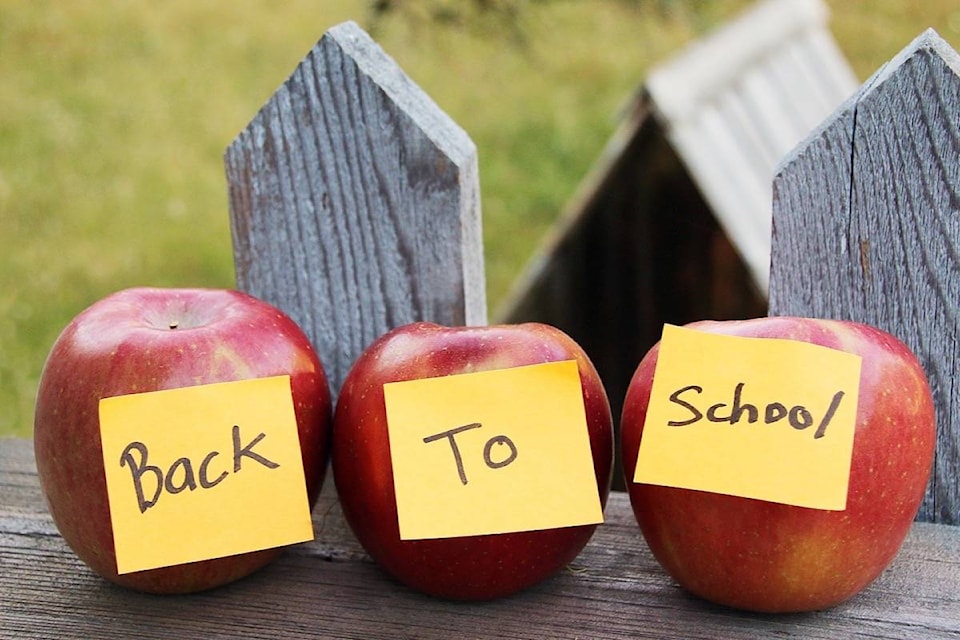Somewhat to my surprise, they still sell pencils, something I thought had vanished in this digital age.
I wasn’t always a scholar and a gentleman. The scholarly part came later, much later, even too much later.
I’m referring to my inauspicious scholastic achievements (if that’s the correct word) during my 12 years of public school. Twelve years of mostly disenchantment and occasional Ds for me, and disappointment for my parents. Oh, there were the odd As and Bs, usually in English and Social Studies which I mostly breezed through thanks to writing essays, and numerous C-pluses along the way.
But there were C-minuses, too, and, sometimes, worse. Particularly in arithmetic, my weakest subject. Long division in Grade 5 was bad enough but, come junior high, algebra proved to be my Berlin Wall.
“Tom isn’t achieving his potential,” or words to that effect, became my teachers’ mantra, one that my poor mother came to anticipate with every report card. But no effort on her part was sufficient to inspire me to try harder.
Oh, once, she got through to me but it didn’t last. When, in high school, I admired a chum’s ‘47 Plymouth coupe that he’d just bought for a whole $30, she offered to do the same for me if I brought my grades up. I doubt that resolve and effort on my part lasted two weeks. Poor Mom.
What prompts this ramble down memory lane is that it’s that time of year again for thousands of kids: Back to school. God, how I hated the last weeks of August when the stores, all stocked up on school supplies, prominently advertised in the newspapers, on radio and TV. Literally rubbing my face in the fact that summer vacation — freedom — was almost at an end.
So it is with today’s merchandisers. But what really caught my eye is how much has changed. Instead of backpacks most of us had metal lunch pails, usually bearing the name and likeness of a comic book hero, at least for the boys.
Again, in place of today’s ubiquitous backpack, high school students carried their notebooks in a heavy-duty zippered looseleaf binder. My first, for Grade 7, was solid leather — genuine cowhide, it said so in gold print on the back. (My mother, who’d grown up in the Depression, set a high standard.)
You didn’t buy disposable ballpoint pens in multiples, you bought one namebrand PaperMate or Parker pen which could last you for years and for which you bought a refill, blue or black ink, as necessary. Somewhat to my surprise, they still sell pencils, something I thought would have all but vanished in this digital age.
Speaking of which, there were no calculators let alone computers and such, just pens, pencils, ruler, an eraser, a teeny pair of scissors that were round-ended so you couldn’t stab yourself and were barely capable of cutting through paper, glue and a set of squares, compass and protactor that came in a gold metal box, and a white metal box containing watercolour paints. But no highlighters, no markers, no gluesticks. Textbooks had to be protected by wrapping them in covers, usually brown kraft paper and given out free because they bore some advertiser’s message. (Some things don’t change, eh?)
Even exercise books have undergone a cosmetic overhaul, today’s having psychedelic covers in bold abstract designs and colours; the opposite of our plain and solid blue, black, green or red Hilroys. (Another name that’s still around, by the way.)
I see very fancy water bottles in today’s ads. We had thermos bottles for hot and cold drinks. (Do today’s kids know what a thermos is?) Also very popular, if I go by the ads, are plastic containers for lunches. With rare exceptions (something like raw carrot slices or sliced fruits) lunches consisted of sandwiches wrapped in wax paper or bread wrappers. (Do today’s kids know what waxed paper is?)
Sandwiches were pretty basic but nutritional: tomato and lettuce, peanut butter and jam, that sort of thing. Maybe a small piece of homemade cake or a couple of cookies and an apple, orange or banana, but certainly no store-bought puddings, potato chips or candy bars. The school cafeteria served only milk, white and brown, the latter for a few cents more to cover the cost of the sugar, no doubt. Which, I should point out, was probably the full extent of our daily exposure to sucrose other than that in Mom’s cooking and our breakfast cereal.
And, lest readers think I go back as far as the last ice age, we did have Tupperware. That is, our mothers did; but these then fashionable plastic containers were for home use, too good (expensive) to be risked by letting a kid take one to school. Compare that to the wide selection of inexpensive snap-lid plasticware available today.
I’m in no position to judge whether teaching has changed and improved over the years. Which isn’t to say that I didn’t have some fine teachers who did their best to bring the best out of me. Sometimes they actually did. Too often they didn’t, for which I’ve come to take responsibility for my own shortcomings.
The irony is that, most of a lifetime later, I’m now everything I wasn’t in school: self-disciplined and positively eager to learn. I’ve always been a voracious reader (do kids still read?) but the very nature of my work requires voluminous research and an open mind. I now embrace knowledge and my interest in the world around me, how it works and why, continues to expand exponentially.
Why, I might yet become a scholar of sorts. I hope you’re watching, Mom.
